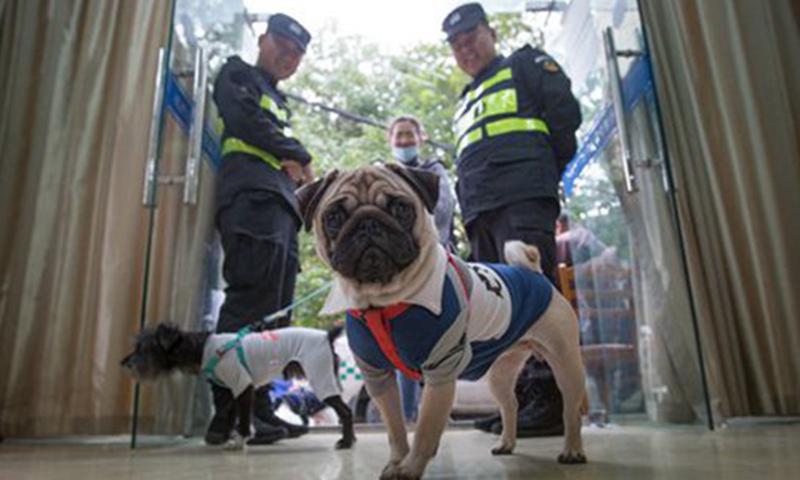The accuracy of pet nose print recognition technology has exceeded 99 percent in China, which vows to realize the intelligent management and tracking of pets, an expert said.
An algorithm engineer specializing in pet nose print identification has stirred heated discussions on China’s Twitter-like Sina Weibo after he disclosed that he had to check about 5,000 dog noses a day during his research.
According to Wang Meng, the engineer, his team found the uniqueness of pets’ nose prints similar to human’s finger prints, making them very suitable to be used in identification recognition. Besides dogs, the technology are also applicable to cats. The accuracy of the technology has exceeded 99 percent, Wang told the media.
While many netizens praised the technology in tracking owners who abandon their pets or owners whose pets go missing, others pointed out that the research work is as difficult as police identifying human finger prints.
According to a white paper on China’s pet industry, the number of pet dogs in Chinese cities and towns reached 55.03 million in 2019. However, pet registration with microchip implantation demands professional equipment and techniques. The implantation process can also bring pain to pets, which seriously affects the willingness of pet owners.
To strengthen pet management, the nose print identification system has been introduced into multiple Chinese cities such as Hangzhou in East China’s Zhejiang Province and Changsha in Central China’s Hunan Province for pet registration and tracking.
With such a system, pets can be registered after owners take photos of their noses.
Unlike implanting microchips into pets, the registration procedure using nose prints can be accomplished online, which significantly reduces pet owners’ time and effort. It also can eliminate owners’ fear of injury to their pets caused by the injection of chips.
These benefits vow to strengthen pet owners’ willingness to register their pets and directly promote the urban dog registration rates.
After dogs have their nose prints registered, the identification of dogs can be immediately recognized by simply scanning their noses when dogs get lost or disturb residents. The information of dog owners can be soon tracked down and provide credentials for ownership and responsibility.
A pet database based on nose prints identification can quickly realize information sharing among public security, urban management, property management and other institutions, which is conducive to the establishment of a big-data-cored smart pet raising city.
In addition to urban pet management, pet AI recognition is also applicable to pet insurance, medical treatment, training, adoption, pet equipment and other scenarios involving the establishment and certification of pets’ identities to promote the digital upgrade of the pet industry chain.
Dogs queue up at an office in Xiacheng district of Hangzhou, East China’s Zhejiang Province on July 11, 2019, to get registration. Photo: IC



